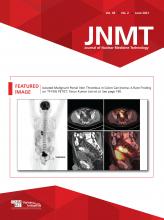Dafang Wu
Springer, 2020, 379 pages, $79.99
This interesting and informative booklet documents the resurgence of nuclear neuroimaging. The book has 8 chapters, the first 4 of which focus mainly on PET and SPECT for dementia and epilepsy. The topics start with the normal distribution of tracers and proceed from easy to advanced or complex cases, with detailed instructions about imaging color selection, reorientation, and appropriate display before interpretation. Although the entire book emphases the importance of hands-on direct visual analysis of images, most of chapter 4 is devoted to the exceptional value of computed SISCOM (subtraction of ictal study coregistered to MRI) in presurgical localization of an epileptogenic focus or zone. Chapter 5 reiterates the value of 18F-FDG PET in brain primary tumors and metastases. Each case begins with a chief complaint, followed by pertinent clinical information, key imaging findings from a whole set of 3-dimensional volumes in orthogonal slices, a discussion with follow-up, and a case summary. Chapter 6 is on 123I-ioflupane (DaTSCAN; GE Healthcare) using SPECT for Parkinsonian disorders. The rest of chapters are on conventional and commonly performed general nuclear medicine neurologic studies related to cerebrospinal fluid flow, leakage, and shunts, as is applicable in various conditions such as normal-pressure hydrocephalus, brain trauma, and surgery, as well as studies related to brain death and brain perfusion, as is applicable in cerebrovascular reserve testing and the Wada test. Some examples of imaging protocols are included in the appendices. The self-assessment quizzes are useful for clinical teaching and preparation for board examinations. The references are a good resource for further reading. Certainly, the actual practice of nuclear neuroimaging can be adapted by each particular institution for the care of patients, as nuclear imaging can be individualized for each situation. Like the Wada test, it can be injected intravenously or intraarterially during the angiogram with a suppressing drug. Seizure localization may be performed in the ictal or interictal state. Overall, this book is a concise and useful summary of the current status of nuclear neuroimaging, and reading it would be a worthwhile consideration for nuclear medicine physicians, diagnostic radiologists, technologists, and medical trainees who practice clinical nuclear medicine. It is a must-have reference for any nuclear medicine clinic.
Footnotes
Published online Dec. 30, 2020.







